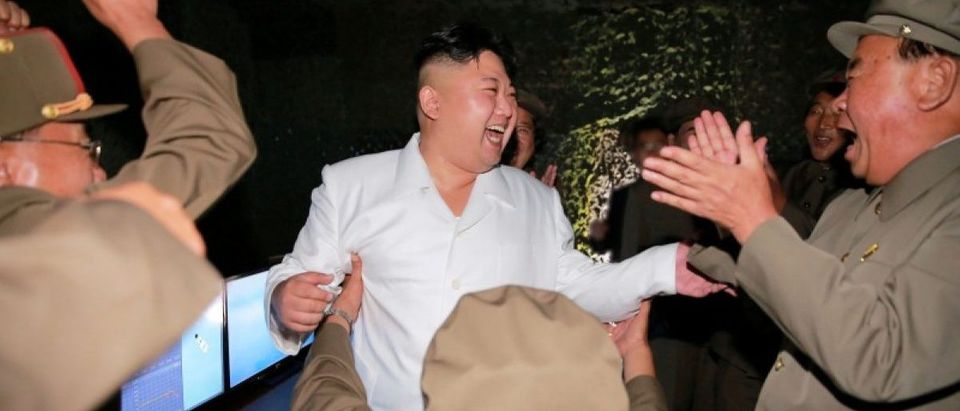North Korea’s missile program is progressing at a truly alarming rate, much faster than initially expected.
When Kim Jong-un warned in his New Year’s address that the North was close to testing an intercontinental ballistic missile, then President-elect Donald Trump fired back on Twitter, “It won’t happen!”
Well, it did.
After decades of failed policies to prevent North Korea from doing so, the reclusive regime shocked the world Tuesday with a successful test of an intercontinental ballistic missile, although it should not have come as a surprise given that Pyongyang told everyone they were going to conduct an ICBM test in the very near future just last month.
While North Korea’s possession of an ICBM is problematic, far more troubling is that this situation with North Korea could get a lot worse very quickly.

The intercontinental ballistic missile Hwasong-14 is seen in this undated photo released by North Korea’s Korean Central News Agency (KCNA) in Pyongyang, July, 4 2017. KCNA/via REUTERS
“This latest development shows how rapidly North Korea is capable of moving,” Joshua Pollack, editor of The Nonproliferation Review and senior research associate in the James Martin Center for Nonproliferation Studies at the Middlebury Institute of International Studies at Monterey, told the Daily Caller News Foundation.
Under Kim’s leadership, North Korea has markedly accelerated its missile development programs. Since the start of this year, North Korea has conducted tests for several never-before-seen missile systems, including short-, medium-, and intermediate-range ballistic missiles, and now North Korea appears to have an ICBM.
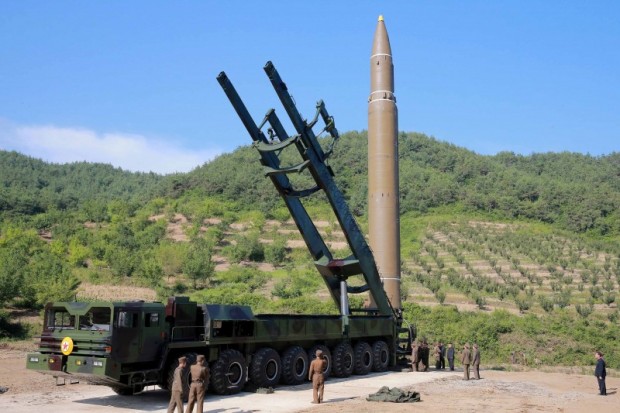
The intercontinental ballistic missile Hwasong-14 is seen in this undated photo released by North Korea’s Korean Central News Agency (KCNA) in Pyongyang July 5, 2017. KCNA/via REUTERS
Pollack estimates that North Korea’s new ICBM, known as the Hwasong-14, could have a range between 3,700 and 4,300 miles, given the flight data from the latest test. Some other observers, such as South Korean Defense Minister Han Min-koo suspects that the missile could potentially strike targets at distances of nearly 5,000 miles. The reality is that the missile’s range could be even longer.
“The question is whether they tested this at full range,” Melissa Hanham, a senior research associate at the East Asia Nonproliferation Program in the James Martin Center for Nonproliferation Studies at the Middlebury Institute of International Studies, explained to TheDCNF, “For now, based on the testing data that is available on the open source, it puts Alaska in range, but the concern is that the range may actually be greater.”
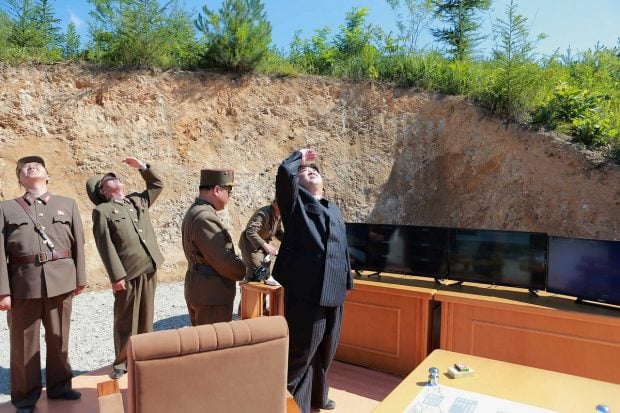
North Korean leader Kim Jong Un looks on during the test-launch of the intercontinental ballistic missile Hwasong-14 in this undated photo released by North Korea’s Korean Central News Agency (KCNA) in Pyongyang July 5, 2017. KCNA/via REUTERS
“Although it is too early to offer a definitive judgment about the full capability of the Hwasong-14, a two-stage missile of this size and sophistication should be able to deliver a nuclear-weapon-size payload much farther than just Alaska, to targets throughout most of the continental United States,” Jeffrey Lewis, the director of the East Asia Nonproliferation Program in the James Martin Center for Nonproliferation Studies at the Middlebury Institute of International Studies at Monterey, wrote in an article Thursday. But, even North Korea’s new ICBM cannot reach beyond Alaska, he argues, the next one North Korea decides to test almost certainly will.
North Korea’s weapons development teams have made incredible and disconcerting progress in recent years. “North Korea has shown us repeatedly in the last few years that they have the underlying science and engineering capabilities, and the resources, to achieve new milestones with missiles,” Pollack explained.
Not only has North Korea demonstrated the ability to develop dangerous missiles with varied ranges for a variety of combat scenarios, but the North has also experimented with different propellants, engines, and launchers. “If they cannot be persuaded to stop testing, then it probably won’t be too long before they demonstrate a longer-range ICBM capable of reaching all points in the United States, since that is their goal,” Pollack added.
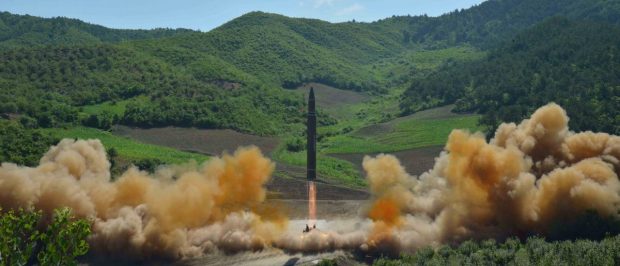
The intercontinental ballistic missile Hwasong-14 is seen during its test launch in this undated photo released by North Korea’s Korean Central News Agency (KCNA) in Pyongyang, July, 4 2017. KCNA/via REUTERS
“It looks like they are working on multiple pathways to an ICBM,” Hanham said. “North Korea does not want to launch one ICBM. They want to launch many ICBMs simultaneously to increase the odds of hitting something, overcoming failures, and defeating any kind of ballistic missile defense.”
During a military parade in April, the North rolled out two road-mobile, canisterized ICBMs, indicating that the North Koreans may be working on developing solid-fueled ICBMs. Solid-propellant missiles require less preparation time, as they can be fueled in advance. Attached to road-mobile launchers, these missiles become much more survivable and less vulnerable to a pre-emptive strike.
Pyongyang may also decide to add a third stage to the two-stage ICBM tested Tuesday.
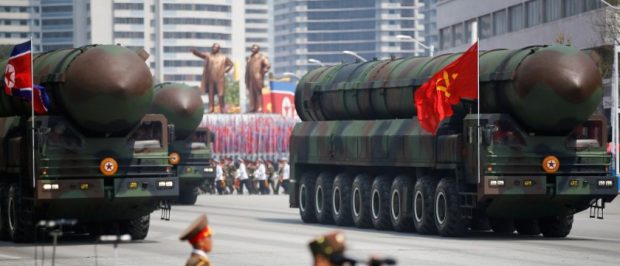
Intercontinental ballistic missiles (ICBM) are driven past the stand with North Korean leader Kim Jong Un and other high ranking officials during a military parade marking the 105th birth anniversary of country’s founding father Kim Il Sung, in Pyongyang April 15, 2017. REUTERS/Damir Sagolj
“This is very different from the development in China, the US, or Russia,” Hanham explained. “They are trying many things at once rather than sort of doing a linear progression.”

Missiles are driven past the stand with North Korean leader Kim Jong Un and other high ranking officials during a military parade marking the 105th birth anniversary of country’s founding father, Kim Il Sung, in Pyongyang April 15, 2017. REUTERS/Damir Sagolj
While developing missiles, North Korea has also been building indigenous launchers. The Transporter Erector Launcher (TEL) that carried the Pukguksong-2 (KN-15) mid-range missile tested for the first time in February and again in May was home grown. The ICBM tested this week was carried on a truck illegally procured from China, but there is strong evidence that the North is developing its own domestically-produced carriers.
“Their goal now is to take this one ICBM and make many ICBMs and transporters and keep these types of missiles constantly rotating around the country so that it becomes harder to know where they are and make a preemptive strike,” Hanham pointed out, explaining, “It’s kind of like a shell game. The more they have the harder they are to track. The more ready and more survivable they are.”
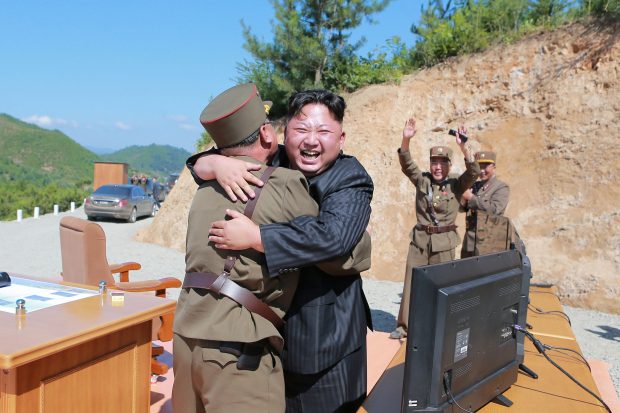
North Korean leader Kim Jong Un reacts with scientists and technicians of the DPRK Academy of Defence Science after the test-launch of the intercontinental ballistic missile Hwasong-14 in this undated photo released by North Korea’s Korean Central News Agency (KCNA) in Pyongyang July, 5, 2017. KCNA/via REUTERS
At the same time, North Korea has been testing nuclear weapons, with two tests last year. After the last test in September, North Korea proudly claimed that it can now miniaturize a nuclear bomb and mount it on a ballistic missile for delivery to targets in its region and half a world away. “There isn’t 100 percent proof that they have a warhead that would go on this missile,” Hanham remarked, referring to the new ICBM. “Although I suspect that after five nuclear tests that it is very probable that they could do such a thing.”
“We may be in store for another nuclear test to demonstrate that sort of thing,” she added.
The real question now is whether the warhead “is rugged enough to survive the shock, vibration, and extreme temperatures that a nuclear warhead would experience on an intercontinental trajectory, in which it would be shot into space and then reenter the earth’s atmosphere,” Lewis wrote in a recent Foreign Affairs article.
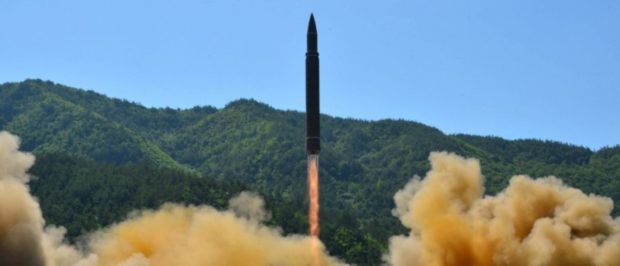
The intercontinental ballistic missile Hwasong-14 is seen during its test in this undated photo released by North Korea’s Korean Central News Agency (KCNA) in Pyongyang, July 5 2017. KCNA/via REUTERS
North Korea’s development of a nuclear-armed ICBM represents a serious threat to U.S. national security, but the good news is that Kim is unlikely to launch one on a whim, as such a move would be suicidal. He may be brutal, but he’s no fool.
“The U.S. conventional and nuclear forces, as well as South Korea and Japan’s forces, greatly outstrip North Korea in terms of technology,” Hanham explained, “I think they would only use this particular weapon in a Hail Mary, the state is collapsing, the regime is gone kind of situation.”
Send tips to ryan@
All content created by the Daily Caller News Foundation, an independent and nonpartisan newswire service, is available without charge to any legitimate news publisher that can provide a large audience. All republished articles must include our logo, our reporter’s byline and their DCNF affiliation. For any questions about our guidelines or partnering with us, please contact licensing@dailycallernewsfoundation.org.


